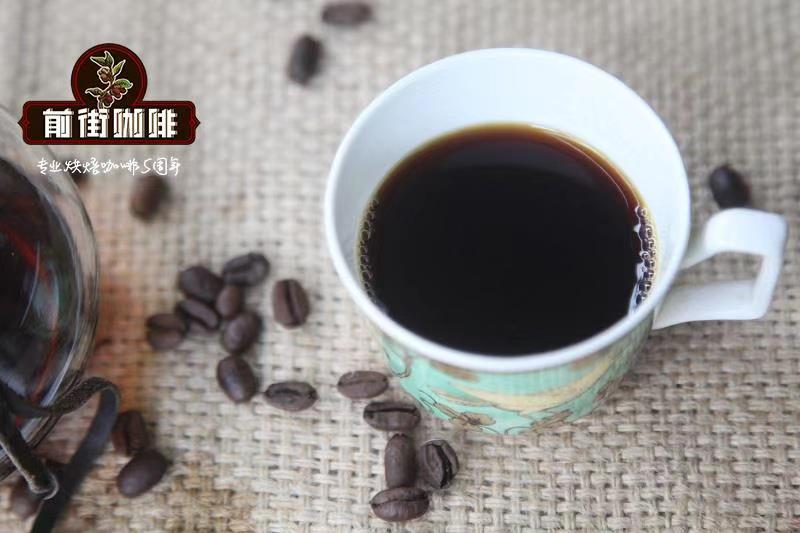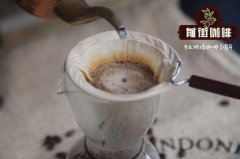What is arusha coffee?| How does the arusha blue mountain coffee variety taste?

Professional coffee knowledge exchange more coffee bean information please follow the coffee workshop (Wechat official account cafe_style)
First of all, the Arabica series includes Tibica, Blue Mountain and Arusha in addition to the main varieties of Bourbon and Kent. And then there's Robusta.
Production and planting system
450000 small farmers depend on coffee (locally known as Kahawa) for their livelihood. These small plots of land covering 5 hectares account for almost 90 per cent of the country's total output, with small farmers planting an average of 0.5-2 hectares. The rest are grown by cooperatives and larger well-organized estates, such as Blackburn in Aldini.
Nationwide, there are three main coffee production systems:
1. Pure forest planting for small farmers (mainly in the south)
two。 Small farmer intercropping (banana and coffee intercropping, mainly in the north and west)
3. Manor planting (less than 10% of total output)
Coffee season
North: July-December
West: may-October
South: July-December
Coffee processing
Coffee in western Tanzania is usually dry-processed (sun-dried), while wet processing is used in other areas. Its boutique coffee is mainly wet processing.
Currently: 98% of Arabica coffee is wet-processed.
Coffee grading
Tanzania chose the British hierarchical nomenclature, which is classified according to shape, size and density. These levels include; AA,A,B,PB,C,E,F,AF,TT,UG and TEX.
Coffee yield
Its annual output is 1.15 million bags.
Appearance and flavor
Northern region:
Raw beans are grayish green, large, high density and beautiful in shape. Medium acidity, good body, pleasant aroma and sweetness.
Southern region:
Enjongbei, Rufoma, Iringa region: raw beans are dark green, thin silver skin. Moderately light acidity and body texture, good fruit flavor and rich floral aroma.
Mbeya, Sunway and Katavi: the raw beans are dark green and their silver skins are yellow. Moderately light acidity and body texture, good fruit flavor and rich floral aroma.
The western region:
Raw beans are round and high in density. Medium acidity and body feel, pleasant aroma.
Coffee trade
Mode of trade
There are two main ways to buy Tanzanian coffee. One is through the moshi coffee trading system. One is to buy directly with trade unions, cooperatives, manors and other organizations.
Coffee export
Coffee is one of Tanzania's main agricultural export crops, accounting for about 5 per cent of total exports and 24 per cent of traditional cash crops, with an average annual export income of $100m over the past 30 years (about $145 million in 2011).
According to the export data of coffee from Tanzania in the past 10 years, we can see that the export volume of Tanzania in 2018 was 1.03 million bags.
In the 2018 go 19 marketing year (MY), Tanzania exported more than 5 million bags to the United States, worth more than US $21.5 million, accounting for 13.2% of Tanzania's total coffee exports.
Export area
The first destination for Tanzanian coffee exports is Japan, accounting for 27% of total coffee exports, followed by 17% in Germany, 12% in Belgium, 10% in Italy, 6% in Morocco and 6% in the United States.
END
Important Notice :
前街咖啡 FrontStreet Coffee has moved to new addredd:
FrontStreet Coffee Address: 315,Donghua East Road,GuangZhou
Tel:020 38364473
- Prev

Introduction to Starbucks Kenya Coffee beans | introduction to Starbucks Kenya and Sumatra coffee beans
Professional coffee knowledge exchange more coffee bean information please follow the coffee workshop (Wechat official account cafe_style) Starbucks usually choose coffee beans with an international score below 80, boutique cafes choose coffee beans with an international score of more than 80, we are not sure which continent Starbucks coffee beans come from, and there is a vague introduction to its farm and its batches. Launched in 1971, Ken
- Next

Which producing area does sulawesi coffee bean come from? which coffee bean has the best flavor in the world?
Professional coffee knowledge exchange more coffee bean information please follow the coffee workshop (Wechat official account cafe_style) then what is the best coffee beans? Of course, what suits you best is the best, but this sentence looks like nonsense. If you haven't drunk enough coffee or tried enough varieties, how do you know which one is right? The item that has been drunk for a long time must be the most suitable.
Related
- Beginners will see the "Coffee pull flower" guide!
- What is the difference between ice blog purified milk and ordinary milk coffee?
- Why is the Philippines the largest producer of crops in Liberia?
- For coffee extraction, should the fine powder be retained?
- How does extracted espresso fill pressed powder? How much strength does it take to press the powder?
- How to make jasmine cold extract coffee? Is the jasmine + latte good?
- Will this little toy really make the coffee taste better? How does Lily Drip affect coffee extraction?
- Will the action of slapping the filter cup also affect coffee extraction?
- What's the difference between powder-to-water ratio and powder-to-liquid ratio?
- What is the Ethiopian local species? What does it have to do with Heirloom native species?

